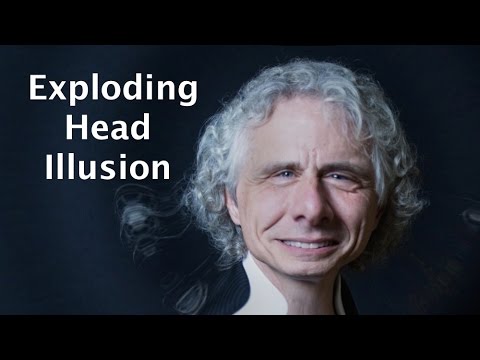Gravitahn
Excerpted from his lecture “Neurons and Neural Computation” at the New College of the Humanities, March 18, 2013. This is a sometimes dense but thoroughly fascinating lecture on the nitty gritty details of visual perception including such phenomena as signal inhibition, habituation, opponent process circuitry, etc.
Watch the full video here: https://www.youtube.com/watch?v=lkSNDN871TQ
New College of the Humanities YouTube channel: https://www.youtube.com/user/NCHumanities
===========================
Steven Pinker is a professor in the Department of Psychology at Harvard University. He conducts research on language and cognition and has authored ten books, including:
The Language Instinct
How the Mind Works
The Blank Slate
The Stuff of Thought
The Better Angels of Our Nature
and most recently, The Sense of Style: The Thinking Person’s Guide to Writing in the 21st Century.
http://stevenpinker.com
Source




Didn't work for me 🙁
On the London Underground, there are scrolling electronic signs in the trains that tell you where the train is going and the next station coming up. If you stare at them for a while then look at anything else you get a similar effect.
LSD worked.
There is no bio and mechanical… humans and machines are ONE WITHIN THE IRIS
I've experienced this whilst fishing in flowing water. Concentrating on a float in water slowly running one way in the lower half of my field of view caused the far bank and sky to flow the opposite way.
I made two videos with this effect:
https://youtu.be/vcu88xFSI9A
https://youtu.be/oOHRpA5ReQ0
Now I know what it's called. 🙂
edit: Changed links because of reupload.
I made two videos with this effect. Now I know what it's called. 🙂
Comments with links seam to be filtered. You have to find the two videos on my channel.
doesn't work when looking at a face in the video
A similar thing happens when I get off the treadmill after half an hour. The walls appear to be moving away, and when I walk toward the water cooler, I feel like I'm moving faster than I should be.
It's been educational.
I think the high is counteracting whatever this thing would lead me to see faces as.
I don't think that is how it works, I've experienced it often when driving a car or looking out from a train window… I think the brain due to fast movement that makes it hard to decode and make sense of the image uses a delay/latency shutter that makes repeated movements slower by shifting the perceived location opposite of the movement and thus makes objects/movement slower => easier to understand… when the movement stops the effect is still turned on making the image shift in certain directions and it takes time for this preemptive effect to go away …what I mean by this is that the effect is not a malfunction of our senses but an intentional process that helped animals early on for example while being chased or while chasing prey… …but this is just my theory… or rather a hypothesis
Wagon wheel effect.
Watching a parade and it stops..it will look like the floats are going backwards.